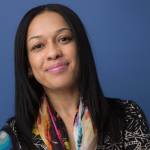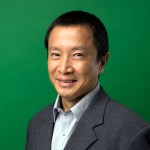
In recent decades, inequality has increased in nearly all regions around the world. But the specifics vary from place the place. To be able to address this alarming global trend, we need a thorough picture of the problem. We need the latest, most complete data.
That’s where the World Inequality Lab’s (WIL) Wealth and Income Database comes in. Open, transparent, and accessible, the database is a rich hub of information about the wealth and income inequities that contribute to global inequality. WIL offers this data in an effort to fuel an honest conversation about the realities of inequality and highlight the important role that national policies and institutions play in shaping it.
To mark the release of WIL’s 2018 World Inequality Report, some of our staff from around the world reflected on what inequality looks like in their regions, and some of the work they’re supporting to help disrupt it.
In South Africa, understanding how systems of power drive inequality
By Nicolette Naylor
Director, Southern Africa
The World Inequality Report is an important reminder that inequality is not inevitable, even though it has been increasing around the world. South Africa has one of the highest Gini coefficients in the world, and is regarded as one of the most unequal countries, with the top 10 percent of the population earning 60 percent of all income and owning 95 percent of all assets. While there has been excellent research done on poverty in South Africa, the time has come for a new approach: One that highlights how the confluence of different systems of power—particularly race, class, and gender—drive inequality in the region.
With support from the foundation’s Southern Africa office, the University of Witwatersrand in Johannesburg has launched the Southern Centre for Inequality Studies, an interdisciplinary policy institute that is the first of its kind in the Global South. The Centre brings together some 80 researchers from across South Africa as well as other research organizations from the Global South, including China, Malaysia, Colombia, Chile, Brazil, Ghana, Kenya, and India. The Southern Centre’s efforts will compliment and leverage the first-rate work being done by the Paris School of Economics, and provide us with an opportunity to build bridges between northern-based centers of excellence and research institutes in the Global South. Together, these efforts will strengthen research on inequality that is rooted in the Global South and aimed at addressing the politics of power within ongoing debates about inequality—and to do so with a specific focus on the impact of race, class, and gender.
In Mexico and Central America, unlocking the potential of local communities
By Ivana Fertziger
Program Officer, Mexico and Central America
In the face of stagnant or declining economic growth, the governments of Mexico and much of Central America are betting heavily on megaprojects—mining, oil and gas, agroindustry, large-scale renewable energy, tourism, and similar activities—as engines for economic development. The vast majority of these projects require the use of rural lands and forests that are already inhabited by indigenous, Afro-descendant, and campesino communities and represent an important source of their livelihoods, spirituality, traditions, medicinal plants, history, and overall wellbeing. They have been sustainably managing their lands for decades, centuries, or even millennia—because their natural resources are inextricably linked to wellbeing.
But when a company sets their sights on those lands for business purposes, they rarely take all of this into account. With a few notable exceptions (including El Salvador´s recent decision to ban metallic mining), public policy in the region has served to facilitate firms´ investments in megaprojects, provide certainty to investors, and systematically exclude indigenous and campesino communities from the decisions that are being made about their land. In many cases, communities don’t even learn about these projects until lands are occupied, ground is broken, and harm to health, livelihoods, and social fabric are well underway, often fueling territorial conflict and violence. In the face of such conflict, many local leaders have been killed or criminalized for speaking out on behalf of their communities.
Rather than seeing rural, indigenous, and Afro-descendant communities as obstacles to development, governments need to understand these communities’ visions for their lands, their families, and the future of their peoples. Policy makers need to ensure that communities have access to information regarding the projects that firms are looking to pursue in or around their territories, and to let them weigh in on the decisions that affect them. Governments have an opportunity to invest in alternatives to large-scale development models, directly supporting local visions for prosperity and growth. Governments also have a duty to protect the lives and safety of community leaders and defenders who are advocating for the wellbeing of their communities. They have a responsibility, and a real opportunity, to level the playing field for indigenous, Afro-descendant, and campesino communities across the region.
Investing in young people as agents of change
By Judith Diers
Program Officer, United States
Around the world, adolescents face substantial barriers to success, including profound discrimination. Too often, young people are seen as a problem, and they are devalued and excluded accordingly. The systems that should be helping young people transition to healthy and productive adulthoods were designed by adults focused on managing the “problem” of youth: This has led to a culture more comfortable with incarceration, detention, and exclusion than with education, empowerment, and resilience.
But neurological, biological, and social science argues for a different approach. Second only to early childhood, adolescence represents a window of opportunity for significant growth and development. The malleability of adolescents’ brains can make it possible for them to recover from past trauma and grow into their full potential—but only if they have the support they need. Science also points to the importance of context and experience in the developmental process. Today, the systems that could connect adolescents with opportunity are often built on entrenched inequality.
Investing in adolescents is timely, smart, and just. We can and must work to disrupt the inequality they face by advancing laws and policies that are informed by a developmental lens and a belief in the inherent goodness and the redeemable nature of individuals. We can do it by strengthening systems so they have young people’s lived experiences at their core. And we can do it by creating a new narrative that centers young people as agents of change and organizers in their communities—as individual protagonists of their own stories.
In Indonesia, making resources and policies more inclusive
By Alexander Irwan
Acting director, Indonesia
Decentralization was introduced in Indonesia in 1999, with the goal of connecting people more closely with decision making and budgeting processes. Today, it is clear that decentralization has not resulted in a more equal distribution of wealth in the country. Indonesia’s Gini index has increased from around 0.30 in 1999, to around 0.40 in 2015. Resources that should benefit the population as a whole have been largely appropriated by a small number of elites. The result is that these elites are largely in control of government decision making, public resources, and the management of natural resources, preventing poor and marginalized groups from getting their fair share of the growing economy.
2014 saw the introduction of Village Law, which mandates that the national government transfer funds directly to villages. The amount of transfers has been increasing in the past three years—in 2017, it was around US$ 4.5 billion. Some data indicates early progress toward lowering the Gini index to under 0.40. But there are major obstacles between the promise of the village fund and the goals of improving public welfare—among them, widespread corruption among village government officials.
That is why national policies aimed at making public resource allocation and natural resource management more inclusive should be accompanied by other measures to reduce elite capture at the national and local levels. A standard process for filing public complaints—one that can be easily used by people at village level—should be introduced. And progressive government agencies, such as the Corruption Eradication Committee, should work closely with civil society organizations to prevent elite groups from capturing government budget and revenues (especially those generated from the exploitation of natural resources) for themselves. Only by addressing these problems will Indonesia be able to disrupt the deep inequalities that are holding the country back, and ensure that all its people have the opportunities and resources they need to thrive.


